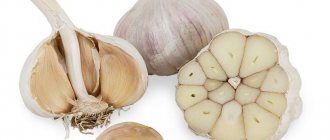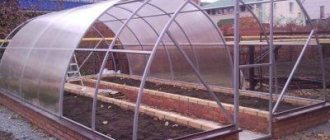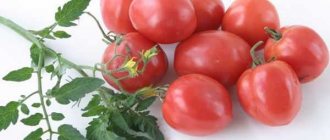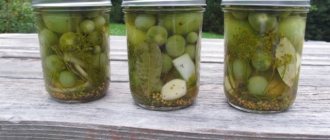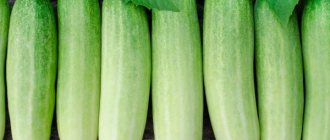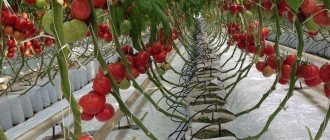Popular methods of planting and growing tomatoes
Tomatoes are grown in different ways, it’s simply impossible to count them all. Every gardener can share his own secrets of planting and growing tomatoes, known only to him. We will consider the most popular and well-known methods, the use of which is known to many.
Most growing methods are based on saving space; not everyone has a wide windowsill for growing seedlings, or on the reluctance to bother with seeds and picking seedlings. It was from these motives that experiments with seeds and ready-made seedlings began:
Galina Kizima method
Perhaps the most famous non-standard method of growing tomato seedlings in a city apartment is Galina Kizima’s method. The basis is the minimum possible use of soil and complete saving of space when germinating tomato seeds. The so-called “swaddling” is quite effective; other vegetables can be grown using this method.
To do this, spread several layers of ordinary toilet paper on polyethylene and moisten it with a spray bottle. Pre-soaked tomato seeds are laid out on it, the distance between each seed should be at least 1 cm, and an indent of 2 cm is made from the edge. Afterwards, the grains are covered with several layers of paper and also moistened.
Next, the resulting ribbons with seeds are rolled into tight rolls and mixed into some container and sent to a bright and warm place. After the shoots appear and the plants get a little stronger, they will need to be “transplanted” into separate diapers.
To do this, use square-sized pieces of polyethylene with a side of 20 cm. Soil is poured into the center of the square, and a seedling is placed in it so that all the leaves are above the polyethylene. Then fold the bottom edge, and then the sides, so that you get a tight roll. Before this, I water the soil abundantly, and then do not wet it for 10-14 days.
Seedlings grown using this method do not require picking; the stems are strong with a large number of leaves, but the rhizome develops poorly. After the third pair of true leaves appears, the tomato seedlings are planted in a greenhouse.
Before planting, it is worth tearing off a few lower leaves and placing the seedlings with their tops facing strictly north. Before this, a glass of wood ash and a pinch of potassium permanganate are placed in each prepared hole, everything is filled with a bucket (!) of water, and only when the water is absorbed do they begin to plant the plants.
How to grow tomatoes under covering material in a greenhouse or soil
Tomato seedlings can also be grown without seedlings under covering material or film. As soon as the ground warms up a little, prepare the bed. They loosen the soil, add fertilizer and moisten it. Prepared and processed seeds are sown in shallow furrows, maximum 1 cm. The grains are sprinkled with a layer of soil, watered with warm water and covered . Agrofibre or polyethylene can be used as a covering material. In this way, a greenhouse effect is created, in which soaked grains sprout much earlier.
The method of growing under covering material is designed to save time; it is used more in the southern regions and the middle zone.
Bucket growing method
Growing tomatoes in buckets, according to reviews from gardeners, gives significantly larger yields. Experiments in this regard have been carried out repeatedly, which have confirmed this fact. The method is suitable for greenhouse cultivation; in open space, tomatoes do not bear fruit so abundantly.
It is no longer possible to determine exactly who started this method of cultivation. They began to use it due to a lack of growing space for grown seedlings . A mixture of soil from the site and compost is taken into a bucket, a tomato sprout is planted, and watered abundantly. Throughout the entire period of growth until fruiting, as it dries, the soil is periodically watered; during the period of ovary formation, watering is increased. The method allows you to significantly extend the fruiting period of any variety, while vegetables can be grown not only in a greenhouse, but also on balconies and loggias.
Tomatoes in buckets
There is an officially registered method; it uses initially prepared buckets with soil mixture. It is worth noting that according to the recommendations, it is better to dig the container 25-30 cm into the ground.
The described methods are recognized as the most common and effective for growing tomatoes in various weather conditions . Their effectiveness has been confirmed by both novice gardeners and specialists in this field.
You can plant and grow tomatoes and other vegetables under any conditions. This can be done even when there is a catastrophic lack of space on the plot or there is no space at all. To do this, you just need to follow all the instructions and advice exactly.
Possible problems and their solutions
Gardeners often encounter various problems when growing radishes. In most cases, they are caused by violations of agricultural technology rules. The table presents the main difficulties and methods for overcoming them.
| Description of the problem | Way to solve the problem |
| Radishes sprout in places | The reasons may vary from poor seed quality to deep incorporation into the soil during planting. The only way to fix the problem is to reseed the bed. |
| Radishes take a long time to sprout | It is possible that the temperature of the air or soil under the film is low. Try adding another layer. |
| Radish goes to the arrow | Daylight hours are too long. The only way to combat this is by shading the bed with an opaque material. Radishes need 8 hours of sunlight a day for normal development. |
| Radishes are too bitter | Insufficient watering |
| The radish bursts, there are deep cracks on the surface | Excess moisture in the soil. |
Radishes can be sown under film without any problems in February - March. The exact timing depends on the region and local climatic conditions. It is better to prepare the bed in the fall: in winter and early spring it is difficult to apply fertilizers. No special care is required, the main thing is not to over-water it and monitor the length of daylight hours. If these conditions are met, early radishes can be obtained as early as mid-March or in the first or second decade of April.
How to grow tomatoes
Tomatoes are grown in greenhouses and in open ground, but to get a good harvest, it is better to use seedlings. If you don’t have time to grow it at home, you can purchase ready-made bushes for planting at gardening stores. But in this case, there is a risk of getting a low-quality product; besides, if you plant the seedlings yourself, it is easier to control what fertilizers were applied and provide quality care.
Today, there are many successfully used methods for growing vegetable crops. Tomato is no exception - it can be planted in several ways: in a bucket, in paper and under film.
Read also: What plants can be grown in pots outdoors
Experiments with growing tomatoes began due to the reluctance or lack of ability of gardeners to tinker with seedlings. And now everyone can choose the most comfortable method for themselves, because the dacha has become not only a garden for growing vegetables, but also a place of relaxation. Tomatoes are also grown without seedlings - under covering material or film.
How to grow tomatoes
Note! Tomatoes should not be planted after potatoes, peppers or eggplants, because these crops have similar diseases. It is also not recommended to plant tomatoes in a place where they have already grown for 4 years. It is also better to exclude the proximity to potatoes in order to prevent infection with late blight. But after legumes, cucumbers, zucchini or pumpkins, tomatoes will grow well.
The bed should be prepared when the earth begins to warm up: loosen the soil, add fertilizer and water. Fertilizers should be used organic: peat, humus. Wood ash is also used. To answer the question of when to plant tomatoes under covering material, you need to understand in what climatic conditions they will grow. Tomatoes, both seedlings and seeds, should be planted as soon as the danger of frost has passed; for the middle zone this is usually mid-May. For planting seeds, you must choose early-ripening varieties, otherwise they may not germinate.
Seeds, prepared in advance (warmed up, disinfected, washed) are sown in furrows that should not exceed 1 cm in depth.
Important! To disinfect the seeds, they must be kept in potassium permanganate for about 15 minutes.
Then the planting must be sprinkled with a layer of earth, watered with warm water and covered. This achieves a greenhouse effect, and the seeds germinate much earlier. For example, agrofibre or polyethylene is used as a covering material. It is important to sow seeds at a great distance, because replanting is not carried out subsequently, and if the plantings are thickened, the leaves may turn yellow. Next, you need to water the plants 3-5 liters per bush, depending on its size, about once a week. At the same time, make sure that water does not get on the leaves.
How to prepare soil and planting material
| Prepare the seeds Purchase seeds from a trusted manufacturer. To begin with, they should be placed in a disinfecting environment. This can be either a solution of potassium permanganate or a solution of hydrogen peroxide. It is also advisable to soak the seeds in a growth stimulator. Purchase any composition of this type, prepare according to the instructions and soak the seeds for the prescribed time | |
| Sow the seeds Prepare containers of suitable size. Fill them with ready-made soil or a mixture of humus, peat and garden soil. Place the seeds in increments of 2-3 cm, the distance between rows is 5 cm. Cover with a layer of nutrient mixture about 1 cm thick. Place in a warm, dark place, cover or wrap with film on top to create a favorable microclimate inside. After germination, place on the windowsill | |
| Pick seedlings When 2 or more true leaves appear on the plants, it needs to be planted in separate containers. Plastic half-liter cups work great. After transplantation, place in a bright place. Water about once a week, spray the leaves with warm water in the morning and evening. | |
| Apply fertilizer It is best to use organic matter: rotted manure, compost or humus. Under no circumstances should fresh manure be used. Apply in an even layer. Consumption rate - approximately a bucket per square meter | |
| Dig up the soil The processing depth is about the bayonet of a shovel. At the same time, fertilizer is buried, you need to try to dig so that it is at the bottom. Be sure to level the surface. Break up all large clods of earth and remove plant debris | |
| Warm up the soil You just need to stretch the film or agro-cloth over the arcs and keep the structure closed. It takes about a week, during which time the soil usually becomes much warmer than outside. You can cover the ground with black film as in the photo or with Spunbond. Under such cover the ground also warms up well and you can plant tomatoes in a few days | |
| Plant tomatoes Choose the time to plant the plants. It is better to do this in the morning or evening. Make holes with a diameter of about 30 cm and the same depth. Carefully remove the seedlings so as not to damage the root ball and place them in the hole. Water generously. Use about 3 liters per plant. Add gradually as moisture is absorbed. Cover the root part with soil and carefully compact the surface. There is no need to water from above; it is better to mulch with a layer of peat or humus before covering the structure |
Types of covering materials
The method of growing tomatoes under film or covering material is used in the southern regions and in the middle zone; it is also quite suitable for the Moscow region. Plants in open ground need shelter because:
- the soil freezes quickly;
- it is necessary to protect them from direct rays of the sun;
- there are climatic conditions that do not correspond to the culture;
- there is a lack of heat.
There are many types of covering material of different types and qualities on sale: film, glass, polycarbonate, acrylic for greenhouses, reinforced film and a modern development - spunbond (agrofibre). The main selection criterion should be its ability to retain heat. It is also important to consider:
- reliability;
- ability to protect from sunlight;
- ease of use.
Important! Plants should be covered when the weather worsens, the air temperature drops, and during periods of prolonged rain.
Film is common because it is inexpensive and easy to use, but it is not very reliable. A film greenhouse can deteriorate in one winter. Despite this, many gardeners still cover crops with it. But the reinforced film will perfectly perform its function in any climate.
Sometimes glass is used for shelter in greenhouses, but it must be thick enough. With the advent of modern materials, this method is abandoned, because glass is short-lived, can easily crack if it is not thick enough, does not attach well to the metal frame of the greenhouse and does not provide sufficient protection from direct rays of the sun.
Polycarbonate
Nowadays, a modern and practical material is used for greenhouses - polycarbonate. It is better to buy it with a cellular type of covering, so that direct sunlight is evenly distributed over the covering, which has a good effect on planting.
Polycarbonate does not change shape and does not collapse under any climatic conditions, reliably retains heat and does not let cold air flow through, is easy to install and does not absorb moisture. The disadvantages include the high price of this type of shelter.
More recently, they began to grow tomatoes under acrylic, a new covering material. It perfectly protects plantings from low temperatures, while being non-toxic and safe. Acrylic is lighter than glass, durable and flexible. Its positive qualities have already been appreciated by many gardeners. When growing tomatoes under acrylic, it is important to ventilate the greenhouse during the day, because the temperature there rises quite high, and to cover it at night.
This covering material has the following advantages:
- the ability to transmit approximately 90% of sunlight, which has a positive effect on the growth and fruiting of crops;
- transmits ultraviolet radiation;
- does not become cloudy for a long time and remains transparent;
- ecologically pure;
- maintains the necessary microclimate;
- does not prevent the penetration of water and air, without interfering with the evaporation of excess moisture;
- promotes ventilation, preventing the formation of fungus;
- durability.
With all its advantages, acrylic also has a number of disadvantages:
- highly flammable;
- thin material may crack;
- high price;
- The service life is still shorter than that of polycarbonate.
Another modern covering material that is successfully used in growing tomatoes is spunbond (agrofibre). It is obtained from molten polymer by folding fibers into a web. The result is a nonwoven material with excellent characteristics.
This covering material is used at any time of the year. Spunbond is produced in different densities and different colors - white, black and two-color. White allows sunlight to pass through and promotes the development of vegetables, black inhibits the development of weeds and is used as a mulch cover, and black and yellow will repel some insects.
Spunbond greenhouse
The advantages of agrofibre are obvious:
- allows air to pass through;
- has a homogeneous structure;
- transmits light;
- effectively retains heat;
- light weight that does not harm young shoots;
- strength at high and low temperatures;
- not susceptible to mold and bacteria;
- non-toxic.
The modern market allows you to choose from a large number of covering materials, taking into account the needs of each gardener. Thanks to the latest technologies, growing tomatoes and other vegetable crops has become much easier, no matter what method is chosen.
How to mulch strawberries with film
Planting strawberries under film is one of the most popular methods of growing this crop in the middle zone. The fact is that film has a number of advantages:
- accelerates soil warming;
- maintains a constant soil temperature;
- inhibits the growth and development of weeds;
- protects plants from gray rot.
The edges of the mulching material are fixed in furrows with a depth of at least 10 cm located along the perimeter of the bed.
However, in order to achieve a good harvest of berries, when planting strawberries under film, you need to follow clear rules. Many novice gardeners neglect them and make a number of mistakes, and then refuse to use film material due to the fact that it allegedly did not live up to expectations. So, how to mulch strawberries correctly in order to get the maximum effect from using the film:
- in the spring, get ready to plant strawberries - dig up the soil, add compost and fertilizer to it, remove clods of soil and weed roots;
- water the beds;
- then cover the soil with mulch film and sprinkle its edges with earth;
- at the required distance, make round slits with a diameter of 8-10 cm or cross-shaped cuts in the film;
- plant the prepared strawberry seedlings in these holes.
Polymer film should only be used on formed beds. If you simply cover the ground with it, water will accumulate in microdepressions, and individual bushes will begin to rot, and other plants will not have enough moisture. Therefore, only flat and high beds should be covered with film, and the film itself needs to be pulled tightly and deflections eliminated.
Rules and secrets of growing tomatoes in a greenhouse
In the risky farming zone, the use of greenhouse structures is the most acceptable way to grow heat-loving plants. Tomatoes are one of the crops whose maximum yield can only be obtained using greenhouses.
Using the simplest greenhouses allows you to get the first fruits of tomatoes in early July. In addition, tomatoes in a greenhouse yield many times more. Than when grown in open ground.
Read also: How to grow kombucha at home from scratch
The supply period for vegetables ripened on the bush is also extended. Whereas when planting in open ground, it is necessary to pick unripe fruits, which affects their taste.
What vegetables are sown in greenhouses or greenhouses?
Regardless of which option you choose for yourself, whether to grow in a greenhouse or in a greenhouse, the thermophilic group of vegetables grow best indoors: tomatoes and peppers.
Growing tomatoes in a greenhouse or hothouse allows you to speed up the harvest by 10 or even 25 days. We will achieve similar results when growing peppers, eggplants and cucumbers.
For many other vegetables , such as cauliflower, lettuce, carrots, radishes, harvest can be accelerated by a few dozen or so days.
Varieties for greenhouses
To grow tomatoes under cover, you should choose hybrid varieties . Moreover, preference should be given to species that independently limit growth . Varieties should be medium and low growing . It is recommended to plant exclusively hybrids in greenhouses, as they are more resistant to diseases and are less affected by pests.
According to experienced gardeners, the most popular and successful varieties for growing in greenhouses are:
- Samara is a tomato of the raceme type of fruit formation. Fruits up to 90 g, smooth, suitable for canning.
- Honey drop is a sugar variety, yellow in color.
- Labrador is short-growing, fruits 50-60 grams, does not take stepson. The variety is able to set fruit even in unfavorable conditions.
- Talalikhin 186 – flat-rounded fruits, up to 100 g, medium-sized. The downside of the variety is its lack of resistance to late blight.
- New Year's - yellow, large fruits, suitable for long-term storage. The variety is resistant to diseases and is characterized by uniform yield.
- Russian size – lettuce, red fruit up to 500g. The bush is medium-sized, resistant to diseases.
Advantages of mulching film
The use of organic mulch requires significant costs for its preparation, transportation, and storage. The film material, while providing a comprehensive effect, is not “picky” and does not require additional care. Its main advantage is the combination of high efficiency, ease of use and affordable price.
Mulching film helps improve the air, water, and temperature conditions of the soil (including greenhouses), and has a positive effect not only on the development of plants and their productivity, but also on the quality of products.
To process plantings in the field, it is advisable to use a bed former with a mulch film stacker.
Growing
Planting tomato seedlings
The quality of seedlings is a component of success in obtaining a good tomato harvest.
For sowing, prepare boxes and fill them with steam-sterilized soil mixture. A special ready-made mixture for tomatoes is suitable.
Or a substrate of four parts turf soil and two parts sand.
To increase nutritional value, add a little wood ash to the mixture (10 liter glass).
seeds in moistened tissue before sowing. After 4-5 days they will swell and can be placed in the ground. should be placed , since there is no guarantee that they will all sprout. Distribute the seeds over the surface, sprinkle them with a 1.5-2 cm layer of soil, cover the box with film. Germination should be carried out at a temperature of 22-25 degrees, in a bright place.
As soon as the first shoots appear, the film should be removed and the temperature reduced to 18-20 degrees so that the plants do not stretch out. When the tomatoes have several true leaves, the seedlings are planted at a distance of 8-10 cm from each other.
Soil preparation
The predecessors of tomatoes on the site can be carrots, onions, cucumbers, and zucchini.
It is also not recommended to plant tomatoes in the same place where they grew last season . The soil in this area is depleted because the tomatoes growing there have sucked out essential minerals.
If your greenhouse is portable, take this condition into account. In a stationary greenhouse, the soil must be replaced. The soil should be loose, with sufficient sand or peat content. It is also necessary to add well-rotted humus. But don't add too much of it, it will cause the leaves to grow.
It is also necessary to maintain the acidity of the soil; dolomite flour or slaked lime is used to reduce it.
Planting seedlings
Before placing tomato seedlings in a permanent place in a greenhouse, they should be hardened off and accustomed to the sun.
If you transplant unprepared plants into the ground, they will begin to hurt, burn in the sun, and may even die.
The hardening process begins in cold weather, with the help of open windows.
You can take the boxes with seedlings out onto the balcony so that they get used to the low temperature . In addition, before planting in the ground, it is necessary to reduce the frequency of watering the seedlings.
With the onset of warm days, take the boxes with seedlings outside and place them in a place protected from wind and sun. Keep the seedlings out of the sun, especially in the first week. Before planting, place the boxes in the greenhouse for two or three days so that the plants get used to its conditions. The film or frames must be opened slightly during the day.
As soon as the threat of frost has passed, the tomatoes are planted in the greenhouse. This usually happens in mid-May.
Tomato bushes are planted at a distance of 35-40 cm from each other, the row spacing is 50-60 cm . If the bushes are elongated, you can plant them at an angle, placing the top of the head on the north side. Having taken root, the bush will rise to the south and form a powerful root system.
After planting tomatoes in a greenhouse, they are watered and the ground is mulched to prevent a crust from forming. A week after planting, the plants are treated with a preparation against late blight.
Shelter construction
In order to make a film shelter, you will need:
- Film - it is better to use polyethylene film with a thickness of at least 100 microns and a width of up to 160 cm.
- Supports are special wire arcs with a length of 160 to 180 cm.
The arcs should be placed every meter across the planted row and the film should be stretched over the top. Fix the edges of the film (sprinkle it) with earth on all sides. If a strong wind that can tear down the shelter is not a frequent visitor to the region, one side of the film can not be sprinkled, but simply pressed with something heavy. This will make the ventilation process easier.
If frosts are expected, the nursery should be covered on top with a second layer of film.
The shelter can be removed when stable warm weather arrives, but before that the nursery must be well ventilated for 5 days. And if the summer is predicted to be cold, vegetables are grown under film, periodically ventilating the mini-greenhouse.
Making a greenhouse
Making a greenhouse for tomatoes with your own hands is not that difficult. You can build a greenhouse from many materials. several simple options for greenhouses for tomatoes with photos below:
Arc-shaped greenhouse made of pipes
The material for such a greenhouse is plastic pipes. They are used to construct a kind of tunnel in the garden bed. It is advisable to place the bed in the west-east direction. Pipes (or metal rods) are stuck into the ground at a distance of approximately 60-80 cm from each other. The top is covered with plastic film or non-woven covering material. The bottom of the covering material is fixed with any heavy objects. This type of greenhouse is suitable for low-growing tomatoes. Greenhouse for tomatoes from old frames
For production, used wooden frames are used, placed on a wooden base. Decide on the length and width of the structure and make the base of the greenhouse by driving pegs into the ground around the perimeter. Cover the pegs with rope and lay a foundation of bricks held together with cement along the line. A wooden beam of the required length is laid on the foundation. The number of rows of timber is determined by the height of the greenhouse. It is not recommended to make a greenhouse more than 1.2 meters in height. Frames are screwed to one side of this frame so that they can be opened upwards.
You can see another option for a simple and inexpensive greenhouse made from old frames in this video:
Greenhouse for tomatoes made of slats covered with film
For this design, wooden frames covered with film are made. Four frames will be needed for the side walls and one or two to secure the top. The size of the frames depends on the size of the planned greenhouse.
There are several simple rules for growing tomatoes in a greenhouse. The number of fruits removed from the bushes depends on proper care of tomatoes. Plant care consists of the following stages:
Watering and fertilizing
Tomatoes should be watered sparingly , as excess moisture in a greenhouse will lead to the development of diseases. When watering, water must reach the roots, so you should water in several stages, waiting for the liquid to be absorbed. Complex special fertilizers are used to feed tomatoes
Read also: What varieties of tomatoes can be grown on a windowsill in winter
Pinching (trimming)
Too thick tomato bushes in a greenhouse interfere with the formation of fruits on them, so excess stems are removed from them. The lower branches extending from the trunk (stepchildren) are removed using pruning shears. On some varieties you should also trim the top so that the bushes do not stretch upward. These techniques help plants form a sufficient number of fruits, rather than expending energy on building up leaf mass.
To prevent the bushes from falling under the weight of the fruits, they are tied to pegs stuck 20 cm from the stem into the ground.
There are many ways to properly tie a garter. The main thing is not to forget that the rope should be soft and not damage the tender shoots.
Hilling and loosening
Several times a season, tomatoes in a greenhouse should be loosened and hilled. Loosening provides oxygen access to the roots , and hilling helps to form additional roots on the trunk.
Disease Prevention
Once every 20 days, tomatoes are treated with copper-containing preparations to protect against late blight.
Stimulation of fruit formation
There are special preparations to increase the formation of ovaries on tomatoes. These mixtures are sprayed on plants during flowering. You can use a solution of boric acid 1g. per liter
Ventilation
Tomato does not like air humidity and overheating above 30 degrees , so the greenhouse should be opened slightly at the ends or the frames should be raised. When hot weather sets in, the cover can be removed completely, covering the tomatoes only at night.
Peppers under film
Growing peppers under a film is done by those summer residents who do not want to waste time on frequent weeding and watering. Peppers are grown quite successfully under film cover, but there are some features that should be taken into account:
- In autumn, the necessary fertilizers are added to the soil: humus or compost - at a rate of 4 to 15 kg/sq.m, superphosphate (80-100 g/sq.m) and potassium chloride (15-25 g/sq.m). If the soil is heavy, add peat (15-25 g/sq.m.), rotted sawdust (1 bucket per 1 sq.m.) or sand (4-5 buckets per 1 sq.m.).
- a few days before planting the seedlings, the soil in the garden bed is leveled, loosened and covered with straw, hay or sawdust with a layer of 3-5 cm. A mulching film is laid on top of this;
- When planting seedlings, cross-shaped cuts are made in the film at a distance of 20-30 cm from one another. Leave 30-40 cm between the rows. Plants are planted in holes, covered with soil and watered abundantly.
Pepper grows well at a relative soil humidity of no more than 75-80%
Mulching film is used to protect garden crops from aggressive environmental conditions. It has a number of advantages and is actively used to maintain heat and control weeds. If you haven't used this covering material yet, be sure to try it.
If frost occurs
If there is a threat of night frosts, the tomato greenhouse needs additional heating. To keep warm during cold nights, you can use the following methods:
- Biofuel. It includes plant and animal products that produce heat under certain conditions. A warm bed is laid in a greenhouse using manure, leaves, and straw. All components are mixed and placed on a bed under a layer of soil. The mixture is buried to a depth of 50 cm, a layer of earth 30-35 cm high is poured on top. Heat is released in such a bed for 60-70 days.
Water heating. Along the perimeter of the greenhouse you can place plastic bottles filled with water. The water heats up during the day and releases heat at night.
Once you cover the greenhouse with film at night, the heat from the water will maintain the temperature until the morning, and your tomatoes will not freeze. Warming watering. If there is a threat of a cold snap at night, you can use a warming watering technique.
The soil in the greenhouse, heated during the day, is watered in the evening and immediately covered with film. The heat released during watering will preserve the plants, since the temperature inside the greenhouse will remain until the morning.
Growing tomatoes in a greenhouse is a process that requires compliance with certain rules. Only strict adherence to them will allow you to get a rich harvest on your site.
everything a summer resident needs to know
What is mulch film
The film for mulching the soil is a continuous strip of polyethylene, usually with holes already cut in it (round or cross-shaped). Its use in garden beds makes it possible to achieve higher yields and make it easier to care for plants and cultivate the soil underneath them.
Depending on the purpose, the sizes and characteristics of this material vary. It is produced in the form of sleeves or half-sleeves, rolled into rolls 1-3 meters wide. Thickness varies from 30 to 200 microns.


